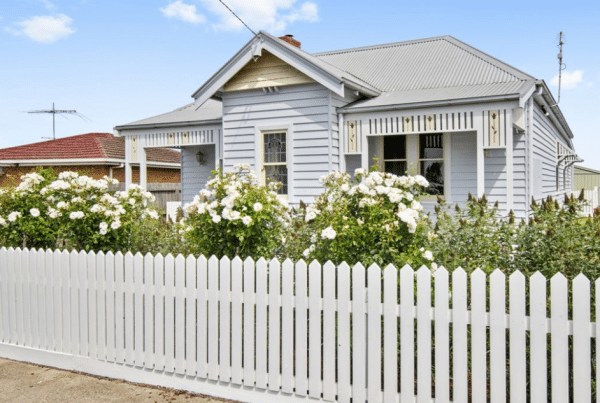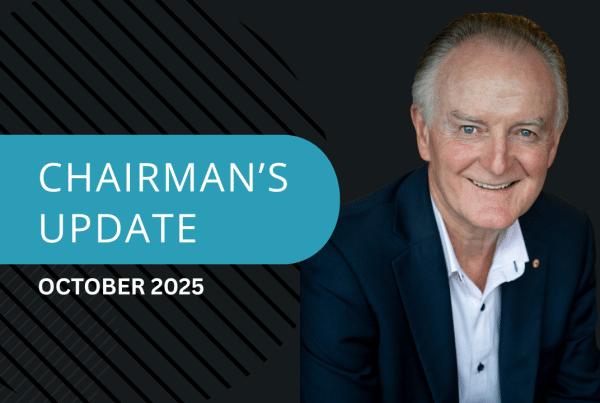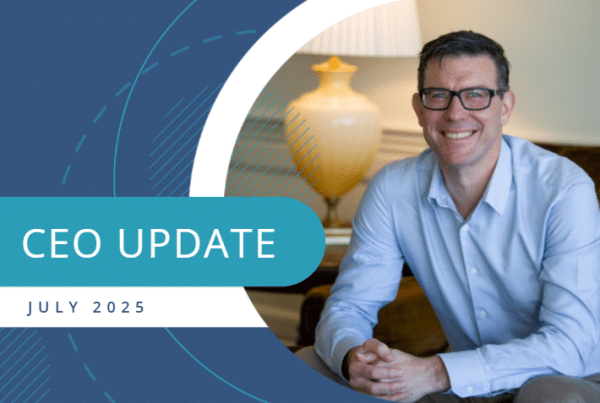
Wholesale and sophisticated investors have traditionally pursued two objectives: achieving strong returns while remaining sufficiently diversified. More recently, they’ve had to consider a third objective, which is to potentially incorporate ESG principles into their investment process.
What makes this challenging is that it can feel like there is tension between the three objectives; that pursuing one must come at the expense of one or both of the others. That’s why investors will always look closely at any investment option that appears to align with all three objectives.
Now that housing affordability has become such a serious social issue in Australia, an opportunity exists for a clever fund manager to offer a new way to invest in residential real estate. To really attract investors, it would need to deliver all three objectives – the prospect of strong returns and prudent diversification, while simultaneously addressing the affordability crisis.
Australia’s housing affordability problem is getting worse
The reason this kind of idea is now on the radar of the investment community is because, as property prices keep increasing, the affordability crisis keeps growing. The biggest issue is not paying off ever-larger mortgages but saving the deposit required to enter the market in the first place; because, for many people, especially essential workers on lower incomes, property prices can increase faster than their capacity to save.
A 2023 report1 from ANZ and CoreLogic found that the time required for people on the median income level to save a 20% house deposit was 10.7 years across Australia, including 15.7 years in Sydney, 11.6 years in Melbourne and 10.8 years in Brisbane.
Domain research2 from 2024 found that the sum required for a 20% house deposit more than doubled in Sydney between 2013 and 2023, from $153,361 to $319,062, and almost doubled in Melbourne ($117,574 to $209,455) and Brisbane ($92,153 to $177,657).
Meanwhile, a 2023 report3 from the Australian Housing and Urban Research Institute (AHURI) revealed that successive generations have been experiencing lower rates of home ownership.
“Home ownership rates at age 30 have fallen from a high of 65% among those born in the late 1950s to around 45% among those born in the 1980s. By age 50 there is incomplete catch-up in home ownership rates – which means that younger cohorts do not close the gap and catch up with their older counterparts. Around 25% of the homeownership gap remains,” according to the report.
First home buyers are co-investing with the Bank of Mum & Dad
The AHURI report noted that parents are increasingly helping their children enter the market, by letting them live rent-free in the family home while they save a deposit, providing direct cash support or going guarantor on a loan. Remarkably, there has been such a rise in Bank of Mum & Dad activity that, in aggregate, it is now “among the top 10 mortgage providers in the country”.
The report also pointed out the important link between Bank of Mum & Dad support and entry into home ownership. “The receipt of large parental transfers (over $10,000) is associated with a doubling of the rate of transition into home ownership; additional time spent co-residing with parents increases the probability of transitioning into home ownership by around 40% relative to those in rental tenure,” according to the report.
Two conclusions come to mind after reading this research:
- Co-investments are becoming increasingly mainstream in Australia’s housing market
- First home buyers who can’t access these kinds of co-investment opportunities are at a big disadvantage
Exploring government co-investment opportunities
So what options do people have if they can’t access Bank of Mum & Dad support?
The most obvious option is to stay in the rental market, but this is tougher than it sounds. As of January 2024, the national rental vacancy rate was at a record-low 0.8%, according to Domain4, making it hard for tenants to find accommodation. As a result, rents5 in the combined capital cities were at record highs at the end of 2023, with median house rents jumping 12.3% in Sydney over the course of the year, 14.6% in Melbourne and 9.1% in Brisbane. That means renters on below-average incomes are being forced out further and further from the city centre.
Another option is to try to save a deposit for a home on the outskirts of the city, where prices can still be dear but are much more affordable than close to the city. The downside, though, is that buyers face an exhausting commute if they work in the city’s inner ring.
A third option is to take advantage of government co-investments.
In November 2024, the Senate passed the Help to Buy program, a shared-equity scheme under which the Federal government will make an equity contribution of up to 40% for new homes and 30% for existing homes. This scheme will be limited to buyers with a household income of less than $90,000 for single buyers or $120,000 for couples.
New South Wales previously had a similar equity co-investment scheme, called Shared Equity Home Buyer Helper. This offered the same equity contribution (40% for new homes, 30% for existing homes) and had similar income caps.
Under the Victorian Homebuyer Fund, the state government acts as co-investors by providing an equity contribution of up to 25%. Income caps apply – $130,485 for individuals and $208,775 for joint applicants.
Queensland helps public housing residents buy the home they’re renting with the Pathways Shared Equity Loan. The government makes an equity contribution of up to 40%.
Western Australia offers equity co-investments of up to 30% through its Keystart program. Income caps (which are variable) apply.
South Australia also does property co-investments. Under HomeStart, the state makes equity contributions of up to 25%. Participants’ household income must be less than $100,000.
Tasmania has a co-investment program called MyHome, which makes an equity contribution of up to 40% for new homes and 30% for existing homes. Income caps (which are variable) apply.
In the ACT, the Shared Equity Scheme helps public housing tenants purchase their home through a government equity contribution of up to 30%.
Australia’s aspiring homeowners need institutional investors to step into the residential property market
Co-investments of the kind launched by state and federal governments play a positive role in making it easier for Australians to get on the property ladder. However there are only so many places available in these programs and they are (reasonably) targeted at people on lower incomes. Yet research shows middle-income earners are just as challenged by home ownership, however are often excluded from government support.
To broaden the reach of co-investment, especially to those without the bank of mum and dad, there is a role for private market solutions, sponsored by Australia’s deep pool of institutional capital – superannuation. By expanding the reach of shared equity schemes that have been proven to work, more Australians who are dealing with housing affordability challenges and mortgage stress can be assisted.
To date, large institutional investors in Australia have not turned their mind to this new co-investment opportunity. This is despite many institutional investors in the UK, Canada and the US having great success in shared equity and shared ownership. Much of this is to do with the narrow focus local superannuation funds have had on residential investing, mainly looking at investing in new rental projects aimed at low-income workers. These projects, often termed ‘Build to Rent’ carry significant construction and occupancy risk and can require government subsidies to obtain commercial returns. For these reasons, among others, the majority of Australia’s institutional investors have found the risk-adjusted returns in affordable housing investments unappealing.
Over time, it is expected that local superannuation funds will broaden their residential portfolio construction approach, to ensure they are investing to support their members across both increased affordable rental and home ownership solutions. The latter is important, as home ownership contributes to security in retirement in a way long-term renting cannot, and furthers their mission of enabling Australians to have a dignified retirement.
How HOPE Housing Fund Management has made co-investments profitable
The question of how institutional investors can identify opportunities in the affordable housing space, that deliver optimal risk-adjusted returns leads us back to the issue raised at the start of this article: could a clever fund manager create an investment option that not only addressed the housing affordability crisis, but also provided investors with strong returns and prudent diversification, with no need for government subsidies?
The answer is yes, thanks to HOPE Housing Fund Management (HOPE/HOPE Housing/Fund Manager), the first co-investor that helps essential workers – such as cleaners, nurses, teachers, social workers and first responders – purchase a home close to work. The Fund Manager successfully closed its first fund, HOPE Fund I in October of 2024, and has recently launched its second fund, HOPE Fund II, pursuing the same shared equity strategy.
In the HOPE Housing model, buyers make an equity contribution of around 50%, through a deposit and mortgage, and the HOPE Fund II will provide the rest. This significantly lowers the deposit hurdle for essential workers, who often have limited incomes, giving them the chance to not only get on the property ladder but also buy close to the city. The Fund Manager’s innovative solution also supports essential workers to stay in their jobs, rather than being forced to switch to a higher-paid profession, just so they can buy a home.
HOPE Fund II accepts contributions from wholesale or sophisticated investors, who must invest at least $100,000. These funds are pooled, so investors back a portfolio of co-investment opportunities, rather than just one.
HOPE’s co-investing model offers a different risk/return profile than the Build-To-Rent model and gives high-net-worth and institutional investors the chance to achieve much loved property market returns while helping to solve a hugely challenging social issue.
Since establishing in October 2022 , HOPE Fund I has invested in 20 properties that house 31 essential workers (as some households have more than one), as of September 2024.
Invest in property, without compounding the problem
Thanks to HOPE’s unique solution, wholesale and sophisticated investors no longer have to make a trade-off between making money and doing good. Now, they can fulfil their investment mandates while helping to solve one of Australia’s biggest social problems.
What makes this solution so heartening is that it really is win-win – investors benefit, but so do their co-investors, the essential workers who are supported by the scheme.
HOPE is leading the way with this Australia-first initiative. As its impact grows, it wouldn’t be surprising if other organisations were inspired to create something similar.
Footnotes
1 https://media.anz.com/posts/2023/november/undersupply-of-housing-impacts-affordability
2 https://www.domain.com.au/news/house-deposits-have-nearly-doubled-in-the-last-decade-1259217/
3 https://www.ahuri.edu.au/research/final-reports/404
4 https://www.domain.com.au/group/media-releases/competition-easing-amidst-record-low-vacancy-rates/
5 https://www.domain.com.au/research/rental-report/december-2023/
Important Information
The information in this last updated in November 2024.
Past performance is not a reliable indicator of future performance.
Prospective investors should carefully review HOPE Fund II’s Information Memorandum (IM) in full and seek professional advice prior to making any investment decision. For more information about the Fund, please refer to the Investor Disclaimer on our website.
The article has been prepared by HOPE Housing Fund Management Limited ACN 629 589 939 (Investment Manager/Manager/Company/HOPE/HOPE Housing) directed to wholesale clients and is strictly for general information and discussion purposes only, without taking into account your personal objectives, financial situation or needs. Before acting on this general information, you must consider its appropriateness having regard to your own objectives, financial situation and needs. The information provided is not intended to replace or serve as a substitute for any accounting, tax or other professional advice, consultation or service and nothing in this article shall be construed as a solicitation to buy or sell any financial product, or to engage in or refrain from engaging in any transaction.
The Investment Manager is a corporate authorised representative (number 001289514) of SILC Fiduciary Solutions Pty Ltd ACN 638 984 602 (AFS licence number 522145). The authority of the Investment Manager is limited to general advice and deal by arranging services to wholesale clients relating to the HOPE Housing Residential Property Trust (Fund/HOPE Fund II) in Australia only.




